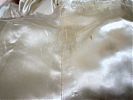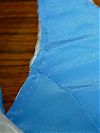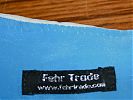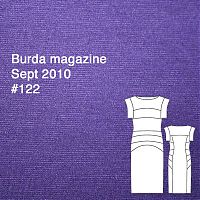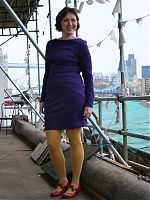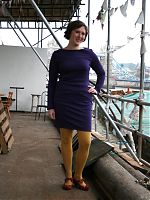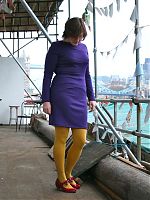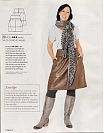Bridal bodice – a slight (but fixable) setback
Apologies for the photo-less post, but with four weeks to go to the wedding, the planning has gone from busy-but-manageable to STRESSAPALOOZA! And as a result, I haven’t had a chance to take the photos of my beautiful lining prickstitching off the camera yet.
But before I forget, I wanted to describe a slight setback I ran into in preparing to attach the skirt to the bodice. To start the process I removed the central skirt panel that contained the blue dye stain (from the tissue paper it was stored in for 60 years), and sewed the two gored sections together, which makes a really unexpectedly beautiful central detail. But as I was lining up the centre front, centre back, and side seams on the skirt and bodice to make the skirt pleats, I kept having excess fabric on one side of the front skirt.
Scratching my head, I measured the front of the skirt, and the CF is indeed central. So then I measured the seam line of my bodice, and ERRRRRRRR! the right side is 27cm to the CF point and the left is 24cm. So that’s why I was having excess skirt fabric on the left but having it match almost exactly on the right.

